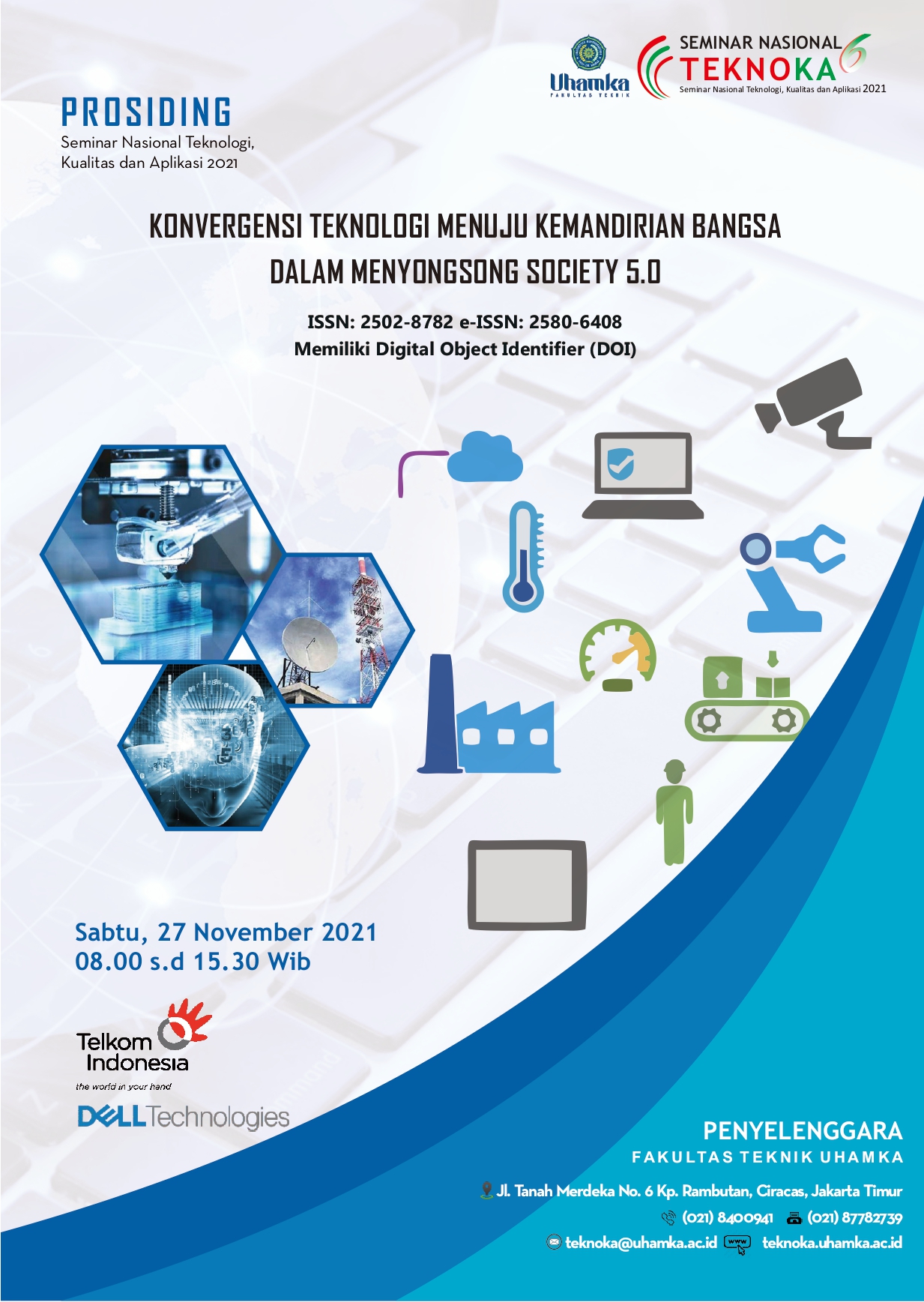Penggunaan Persamaan Avrami Untuk Menentukan Koefisien Konveksi Solar Still
Keywords:
solar, still, kondensor, efisiensi, efektivitasAbstract
Pengolahan air laut menjadi air tawar terus diteliti untuk mendapat cara yang optimum, salah satunya dengan menggunakan solar still. Solar still memiliki prinsip kerja yang sederhana dan mudah tetapi penjelasan mekanisme perpindahan panas yang terjadi di dalamnya sama sekali tidak sederhana. Seperti untuk menentukan koefisien konveksi di dalam solar still membutuhkan perhitungan yang panjang dengan data yang tidak sedikit. Oleh karena itu tujuan dari penelitian ini untuk menghitung koefisien konveksi solar still dengan menggunakan persamaan Avrami yang sering digunakan untuk menjelaskan mekanisme pada perubahan fasa. Hasil perhitungan berdasarkan hasil penelitian atau koefisien konveksi aktual akan dibandingkan dengan koefisien konveksi mengetahui efisiensi termal dan efektivitas produksi kondensor pada solar still. Penelitian dilakukan di Fakultas Teknik, Universitas Muhammadiyah Prof. Dr. HAMKA periode Maret - Mei 2021. Material yang digunakan yaitu aluminium dengan panjang 300 mm, lebar 300 mm dan tebal 1,6 mm untuk pelat basin, kaca ganda dengan tebal 3 mm untuk penutup atas dan samping solar still. Penelitian dilakukan dalam ruangan dengan intensitas radiasi menggunakan lampu halogen. Varibel yang diukur berupa temperatur air, evaporasi, permukaan kaca dalam, kondensor, saluran masuk dan keluar pendingin kondensor dengan menggunakan fluke meter, intensitas radiasi menggunakan solar power meter dan air hasil desalinasi dengan neraca digital. Dari hasil penelitian menunjukan rata-rata efisiensi termal kondensor pada solar still mencapai 83,94% dan massa desalinasi air laut mencapai 451,32 gram dengan efektivitas produksi kondensor sebesar 96,4% serta nilai korelasi 0,99.
Downloads
References
S. Combes, “Protecting Freshwater Ecosystems in the Face of Global Climate Change,” no. Climate, pp. 117–216, 2005.
D. Guha-Sapir, P. Hoyois, and R. Below, “Annual Disaster Stastical Review 2013,” Cent. Res. Epidemiol. Disaasters, pp. 1–50, 2013.
Lisa Guppy et al., “Global Water Crisis : the Facts,” pp. 1–12, 2017.
P. G. Youssef, R. K. Al-Dadah, and S. M. Mahmoud, “Comparative analysis of desalination technologies,” Energy Procedia, vol. 61, pp. 2604–2607, 2014, doi:10.1016/j.egypro.2014.12.258.
M. S. S. Abujazar, S. Fatihah, A. R. Rakmi, and M. Z. Shahrom, “The effects of design parameters on productivity performance of a solar still for seawater desalination: A review,” Desalination, vol. 385, pp. 178–193, 2016, doi: 10.1016/j.desal.2016.02.025.
A. Boutriaa and A. Rahmani, “Thermal modeling of a basin type solar still enhanced by a natural circulation loop,” Comput. Chem. Eng., vol. 101, pp. 31–43, 2017, doi: 10.1016/j.compchemeng.2017.02.033.
S. W. Sharshir, A. H. Elsheikh, G. Peng, N. Yang, M. O. A. El-Samadony, and A. E. Kabeel, “Thermal performance and exergy analysis of solar stills – A review,” Renew. Sustain. Energy Rev., vol. 73, no. June, pp. 521–544, 2017, doi: 10.1016/j.rser.2017.01.156.
Y. P. Yadav, G. N. Tiwari, P. C. Eames, and B. Norton, “Solar distillation systems: The state-of-the-art in design development and performance analysis,” Renew. Energy, vol. 5, no. 1–4, pp. 509–516, 1994, doi: 10.1016/0960-1481(94)90425-1.
G. N. Tiwari, V. Dimri, and A. Chel, “Parametric study of an active and passive solar distillation system: Energy and exergy analysis,” Desalination, vol. 242, no. 242, pp. 1–18, 2009, doi: 10.1016/j.desal.200.
Y. H. Zurigat and M. K. Abu-Arabi, “Modelling and performance analysis of a regenerative solar desalination unit,” Appl. Therm. Eng., vol. 24, no. 7, pp. 1061–1072, 2004, doi: 10.1016/j.applthermaleng.2003.11.010.
G. N. Tiwari, S. K. Shukla, and I. P. Singh, “Computer modeling of passive/active solar stills by using inner glass temperature,” Desalination, vol. 154, no. 2, pp. 171–185, 2003, doi: 10.1016/S0011-9164(03)80018-8.
A. K. Tiwari and G. N. Tiwari, “Effect of water depths on heat and mass transfer in a passive solar still: in summer climatic condition,” Desalination, vol. 195, no. 1–3, pp. 78–94, 2006, doi: 10.1016/j.desal.2005.11.014.
Ahmed, “Study of Single Effect Solar Still With an Internal Condenser,” vol. 5, no. 6, pp. 637–643, 1988.
C. Elango, N. Gunasekaran, and K. Sampathkumar, “Thermal models of solar still - A comprehensive review,” Renew. Sustain. Energy Rev., vol. 47, pp. 856–911, 2015, doi: 10.1016/j.rser.2015.03.054.
K. R. Ranjan, S. C. Kaushik, and N. L. Panwar, “Energy and exergy analysis of passive solar distillation systems,” Int. J. Low-Carbon Technol., vol. 11, no. 2, pp. 211–221, 2016, doi: 10.1093/ijlct/ctt069.
J. P. Holman, Heat Transfer, Ten., vol. 15, no. 3. New York, 2010.
R. Svoboda, “Crystallization of glasses – When to use the Johnson-Mehl-Avrami kinetics?,” J. Eur. Ceram. Soc., vol. 41, no. 15, pp. 7862–7867, 2021, doi: 10.1016/j.jeurceramsoc.2021.08.026.
K. Dimitra and C. Konstantinos, “Nonisothermal Crystallization Kinetics: Studying the Validity of Different Johnson–Mehl–Avrami–Erofeev–Kolmogorov (JMAEK) Based Equations,” Thermochim. Acta, vol. 704, no. March, p. 179030, 2021, doi: 10.1016/j.tca.2021.179030.
M. Avrami, “Kinetics of phase change. I: General theory,” J. Chem. Phys., vol. 7, no. 12, pp. 1103–1112, 1939, doi: 10.1063/1.1750380.
E. C. N. Lopes, F. S. C. Dos Anjos, E. F. S. Vieira, and A. R. Cestari, “An alternative Avrami equation to evaluate kinetic parameters of the interaction of Hg(II) with thin chitosan membranes,” J. Colloid Interface Sci., vol. 263, no. 2, pp. 542–547, 2003, doi: 10.1016/S0021-9797(03)00326-6.
P. Malaiyappan and N. Elumalai, “Single basin and single slope solar still: Various basin material thermal research,” J. Chem. Pharm. Sci., vol. 7, no. 7, pp. 48–51, 2015.
D. A. Bara, Gusnawati, and Nurhayati, “Pengaruh Sudut Kaca Penutup dan Jenis Kaca terhadap Efisiensi Kolektor Surya pada Proses Destilasi Air Laut,” Lontar J. Tek. Mesin Undana, vol. 03, no. 02, pp. 01–10, 2016.
D. Mugisidi, R. S. Cahyani, O. Heriyani, D. Agusman, and Rifky, “Effect of Iron Sand in Single Basin Solar Still: Experimental Study,” IOP Conf. Ser. Earth Environ. Sci., vol. 268, no. 1, 2019, doi: 10.1088/1755-1315/268/1/012158.
M. Zeroual, H. Bouguettaia, D. Bechki, S. Boughali, B. Bouchekima, and H. Mahcene, “Experimental investigation on a double-slope solar still with partially cooled condenser in the region of Ouargla (Algeria),” Energy Procedia, vol. 6, pp. 736–742, 2011, doi: 10.1016/j.egypro.2011.05.083.
H. E. S. Fath and S. M. Elsherbiny, “Effect of adding a passive condenser on solar still performance,” Energy Convers. Manag., vol. 34, no. 1, pp. 63–72, 1993, doi: 10.1016/0196-8904(93)90008-X.
M. Rosyada, Y. Prasetyo, and H. Haniah, “Analisis Korelasi Suhu Permukaan Laut terhadap Curah Hujan dengan Metode Penginderaan Jauh Tahun 2021-2013,” J. Geod. Undip, vol. 4, no. 1, pp. 85–94, 2015.
Downloads
Published
How to Cite
Issue
Section
License
Copyright (c) 2022 Prosiding Seminar Nasional Teknoka

This work is licensed under a Creative Commons Attribution-NonCommercial-ShareAlike 4.0 International License.






 Supported by :
Supported by :



